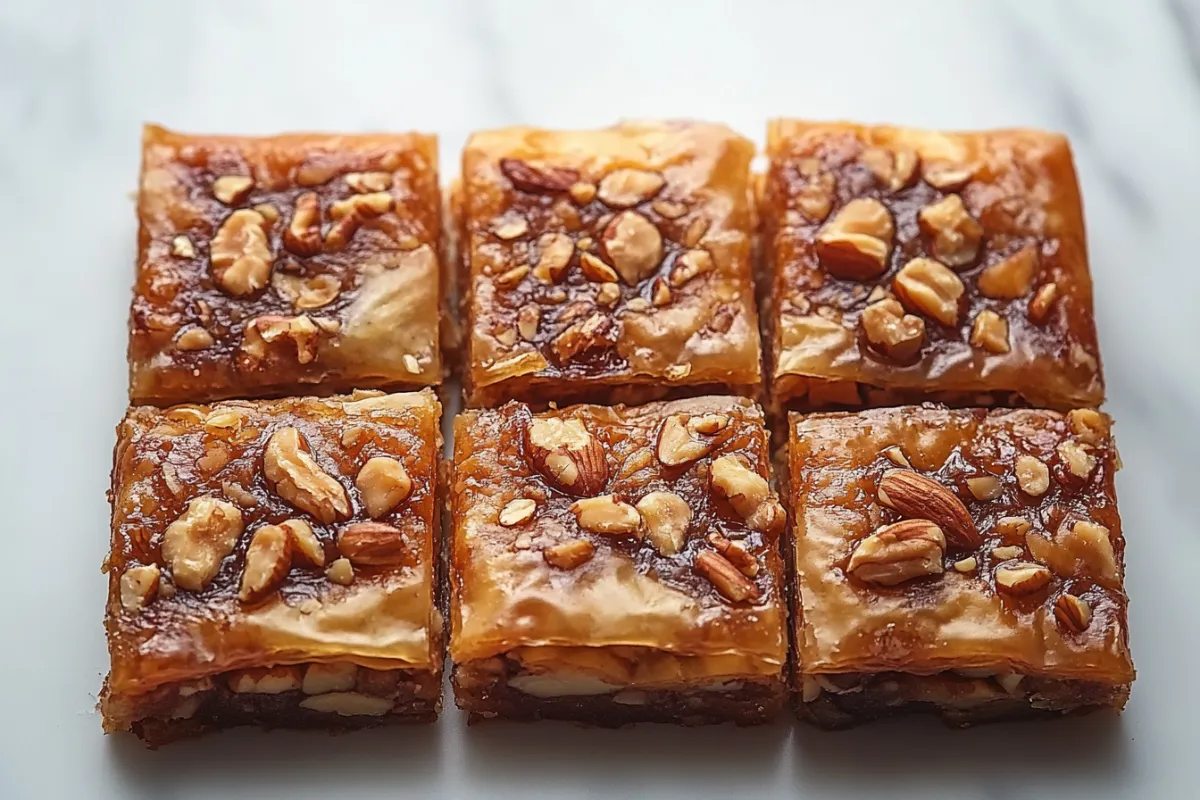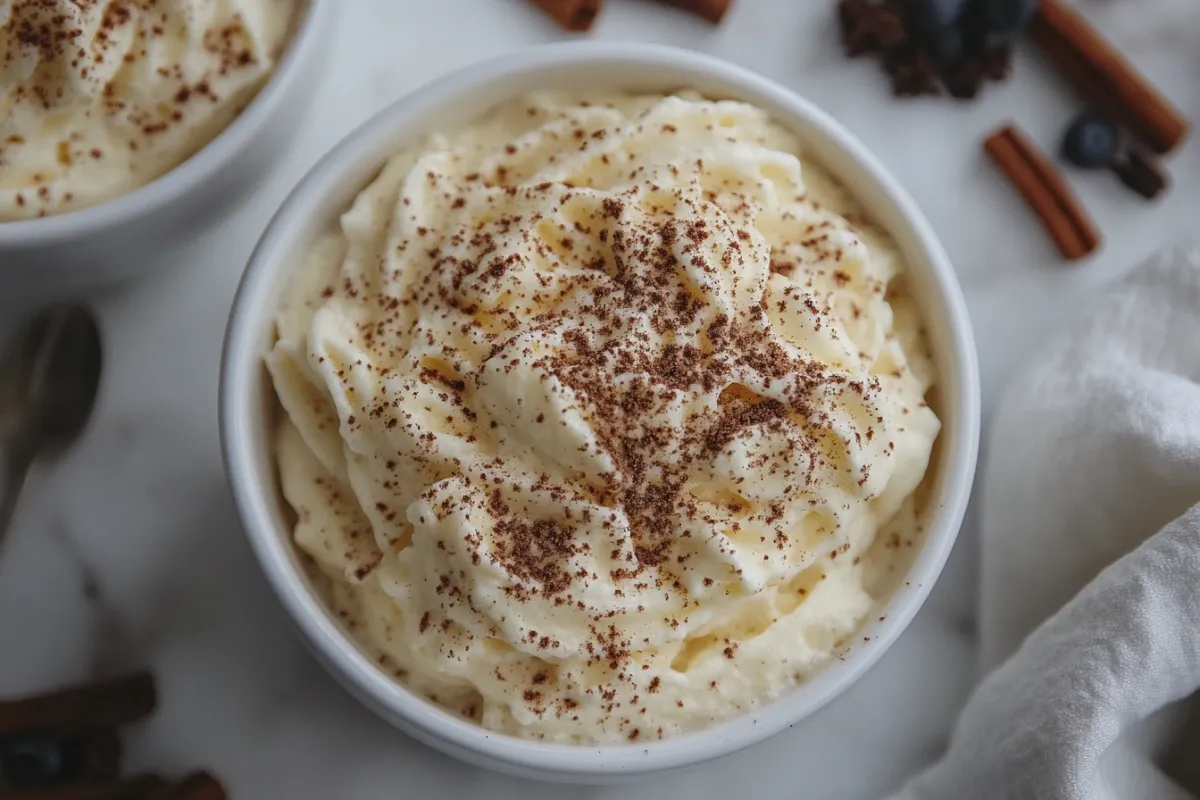Discover the world of greek desserts with our guide. We’ll explore traditional recipes and flavors that make Greek sweets so irresistible. Learn about everything from honey-drenched pastries to creamy custards Learn more about the art of custards and discover how their textures vary across desserts.
Greek desserts offer a delightful way to end a meal. They feature unique flavors and textures. These treats are often sweet, rich, and aromatic. Many recipes use honey, nuts, and phyllo dough. Furthermore, people often enjoy them during celebrations and gatherings.
Discovering the Magic of Traditional Greek Desserts
Traditional greek desserts are known for their use of simple yet flavorful ingredients. These sweets often highlight the natural sweetness of honey. Additionally, they feature the crunchy texture of nuts and flaky phyllo pastry.
Baklava: A Classic Greek Dessert
One of the most famous greek desserts is Baklava. This layered pastry features thin sheets of phyllo. People fill it with chopped nuts and sweeten it with syrup. Baklava is known for its rich, sweet flavor. Its crunchy texture is also a key element. Therefore, many people favor it.
-
They typically use walnuts, pistachios, or almonds in baklava.
-
The syrup often includes lemon juice and honey.
-
Furthermore, the syrup must soak thoroughly into the pastry for the best results.
Galaktoboureko: Creamy Custard Delight
Another popular choice is Galaktoboureko. This is a custard pie encased in flaky phyllo pastry. Galaktoboureko boasts a creamy, smooth filling. The contrast between the custard and pastry is wonderful. Consequently, it’s a comfort dessert. Indeed, many Greek families enjoy it on special occasions.
-
They make the custard with semolina flour, eggs, and milk.
-
Aromatic vanilla or citrus zest often flavors it.
-
Specifically, the top phyllo layer becomes golden and crispy during baking.
Discover tips for creating the perfect custard and achieving a golden, crispy phyllo crust.
Loukoumades: Honey-Dipped Doughnuts
Loukoumades are fluffy, deep-fried doughnuts. They are another popular greek dessert. These small golden balls are typically drizzled with honey syrup. They are often sprinkled with cinnamon. Therefore, they offer a simple yet delicious treat. They have a light, airy texture. However, they are very satisfying.
-
People often serve Loukoumades warm.
-
They are a common street food in Greece.
-
Additionally, they are a popular dessert at parties and festivals.
Exploring the Variety of Greek Desserts
Besides the most popular items, a large variety of greek desserts exist. Each region has its own specialties. Consequently, you’ll find unique flavors and techniques. This variety reflects the rich culinary heritage of Greece.
Kataifi: Shredded Phyllo Pastry
Kataifi features shredded phyllo dough. Specifically, they bake it until golden and crispy. Then, they soak it in sweet syrup. Kataifi may be filled with nuts or served plain. Accordingly, it’s similar to baklava, but with a different texture.
-
The shredded phyllo is similar to angel hair pasta.
-
They often infuse the syrup with cinnamon or cloves.
-
Indeed, the crispy texture is essential to the success of the dish.
Rizogalo: Creamy Rice Pudding
Rizogalo, a Greek rice pudding, is another favorite. It features creamy, slow-cooked rice. They flavor Rizogalo with milk, sugar, and vanilla. Furthermore, they often garnish it with cinnamon. This dessert is a simple comfort food. However, it’s deeply satisfying. In addition, they often serve it warm or chilled.
-
The rice used is typically short-grain.
-
They cook it low and slow for a very creamy texture.
-
Moreover, you can commonly find it in both Greek homes and taverns.
Melomakarona: Spiced Honey Cookies
Melomakarona are another traditional greek dessert, especially popular during the Christmas season. These oval-shaped cookies are soaked in honey syrup and sprinkled with walnuts. Consequently, they are known for their rich spice flavor and soft, moist texture. Furthermore, they are a delightful addition to any festive table.
-
Cinnamon, cloves, and orange zest flavor the cookies.
-
The syrup is a key element that adds moisture and sweetness.
-
Typically, people enjoy them with family and friends during the holidays.
Kourabiedes: Buttery Almond Cookies
Kourabiedes are buttery shortbread cookies covered in powdered sugar. Indeed, they are popular at special events like weddings and baptisms. These melt-in-your-mouth cookies are often flavored with almonds. They are light, delicate, and very festive. However, their simple elegance makes them a favorite.
-
The use of butter is very important for the flavor and texture.
-
People usually decorate them with powdered sugar for an elegant appearance.
-
Specifically, these cookies represent celebration and joy.
Other Unique Greek Desserts
Greece offers a variety of other unique greek desserts beyond these classics. For example, you might find Pasteli, a sesame seed and honey candy. Also, Halva, a semolina-based dessert, appears in many forms. Additionally, each region has its own distinct versions. This variety makes exploring Greek desserts a culinary adventure.
-
Consider trying Spoon aSweets (Glyka tou koutaliou), fruits preserved in syrup.
-
Look for local bakeries for regional specialties.
-
Furthermore, the best way to discover them is to ask for recommendations.
Discover more about traditional Mediterranean sweets
Making Greek Desserts at Home
Making greek desserts at home is not as hard as it sounds. Many recipes use everyday ingredients. Therefore, you can enjoy these treats anytime.
Key Ingredients for Greek Desserts
Several ingredients are staples in greek desserts. These include honey, nuts, phyllo dough, and semolina. Additionally, olive oil and spices play crucial roles. Specifically, the quality of these ingredients can impact the final result.
-
Use good-quality honey for the best flavor.
-
Fresh, unsalted nuts are crucial for the perfect texture.
-
Handle phyllo dough carefully to prevent tearing.
Simple Greek Dessert Recipes
-
Honey Yogurt with Walnuts: A very simple yet delicious greek dessert. Combine Greek yogurt with honey. Top with walnuts. Indeed, this is a great quick option.
-
Greek Fruit Salad: Combine fresh fruits. Drizzle with honey and sprinkle cinnamon. Additionally, consider adding a touch of mint.
-
Simple Semolina Halva: A quick stovetop dessert made with semolina, sugar, and water. Add cinnamon and nuts. Thus, you’ll have a great treat very quickly.
Advanced Greek Dessert Recipes
For those who want a challenge, consider these advanced recipes.
-
Homemade Baklava: Making baklava from scratch requires layering phyllo dough and nuts. It also calls for making a perfect syrup. Therefore, this will enhance your baking skills.
-
Authentic Galaktoboureko: Creating an authentic galaktoboureko requires making the perfect custard. Then, you must bake it with a golden phyllo crust. Indeed, it is rewarding but needs patience.
-
Loukoumades with a Twist: Experiment with flavored syrups, such as rose water, for a unique take on loukoumades. Accordingly, this will bring an interesting dimension to a classic.
The Cultural Significance of Greek Desserts
Greek desserts are an important part of Greek culture. They are often served at special events. These include holidays, weddings, and family gatherings. Therefore, they carry significant meaning and tradition.
Desserts Sweets for Special Occasions
Specific greek desserts are associated with specific celebrations. Baklava, for instance, is popular at weddings and festivals. Furthermore, people commonly enjoy Melomakarona (honey cookies) during the Christmas holidays.
-
People often enjoy Tsoureki (sweet bread) during Easter.
-
They commonly serve Kourabiedes (almond cookies) at weddings and baptisms.
-
Additionally, they prepare these desserts with care and love.
The Role of Family and Traditions
Many greek dessert recipes are passed down through generations. People often make them with families during holidays. Thus, these desserts represent tradition, family, and heritage. Moreover, they are a vital part of Greek culture.
-
Children often learn these recipes from their parents and grandparents.
-
Many families have their own special variations of classic recipes.
-
Indeed, cooking and sharing these desserts is a beloved tradition.
Sharing and Hospitality
Sharing food is central to Greek culture. Consequently, offering guests a greek dessert is a sign of hospitality. This act of sharing symbolizes warmth and generosity. Therefore, it’s a wonderful part of Greek culture.
-
Usually, people present a tray of desserts to guests.
-
Moreover, the act of offering food is a sign of welcome.
-
Finally, it’s a key way to connect and celebrate with others.
Tips for Perfect Greek Desserts
Creating perfect greek desserts requires attention to detail. However, with a few key tips, you can achieve impressive results.
Dough Handling Techniques of Greek Desserts
Working with phyllo dough can be challenging. Therefore, use the right technique. Keep the dough moist. Work quickly to prevent it from drying out.
-
Thaw the dough in the refrigerator overnight.
-
Keep the unused dough covered with a damp cloth.
-
Brush the layers with melted butter or oil.
Syrup Preparation of Greek Desserts
The syrup is a crucial component. Thus, prepare it properly. It should be thick enough. Also, the correct consistency is important.
-
Combine sugar, water, lemon juice, and honey.
-
Simmer until the syrup has thickened slightly.
-
Allow the syrup to cool before pouring it over the pastry.
Serving Suggestions
-
Serve greek desserts warm or chilled. It depends on the dish. Additionally, you can garnish some with cinnamon, nuts, or powdered sugar.
-
Serve Loukoumades immediately.
-
Galaktoboureko is often best served at room temperature.
-
Furthermore, consider the presentation for an elegant touch.
Storage Tips
To keep greek desserts fresh, store them properly.
-
Store Baklava and Kataifi at room temperature or in a cool, dry place.
-
Store Galaktoboureko and rice pudding in the refrigerator.
-
Furthermore, always cover them well to prevent drying out.
Health Considerations of Greek Sweets
Greek desserts are delicious but often high in sugar and fat. Therefore, it is important to consume them in moderation. However, they can still fit into a balanced diet when enjoyed as a treat.
Nutritional Information
Most greek desserts are rich in calories. They contain sugar, fat, and carbohydrates. Consequently, you should not eat them too frequently. Moreover, be aware of the portion sizes.
-
Ingredients such as honey and nuts provide some nutritional value.
-
However, the high-sugar content is still a concern.
-
Thus, it’s beneficial to practice mindful eating.
Alternatives and Modifications
If you are looking to reduce sugar, use honey in smaller amounts. Additionally, consider using healthier fats. Whole wheat flour is another option.
-
Use whole wheat phyllo dough for added fiber.
-
Reduce the amount of syrup to control sugar intake.
-
Finally, choose fresh fruit-based desserts for a healthier choice.
Mindful Consumption
Enjoy greek desserts in moderation. Be mindful of serving sizes. Savor each bite. Consequently, this allows you to appreciate them without excess.
-
Choose smaller portions.
-
Enjoy them occasionally as a treat.
-
In addition, balance them with a healthy diet.
In conclusion, greek desserts are a testament to the rich culinary heritage of Greece. The flavors are truly unique and should be savored. From the flaky baklava to the creamy galaktoboureko, a sweet treat exists for everyone. They are wonderful treats that bring pleasure to every occasion.
Frequently Asked Questions (FAQs)
-
What are the most popular greek desserts?
Popular choices include baklava, galaktoboureko, loukoumades, and rizogalo. -
How are greek desserts typically served?
People often serve greek desserts as a special treat. They are commonly part of gatherings and celebrations. -
What are the key ingredients in greek desserts?
Key ingredients include honey, nuts, phyllo dough, semolina, olive oil and spices. -
Can greek desserts be made at home easily?
Yes, many greek dessert recipes use simple ingredients. You can make them at home with a little practice.




